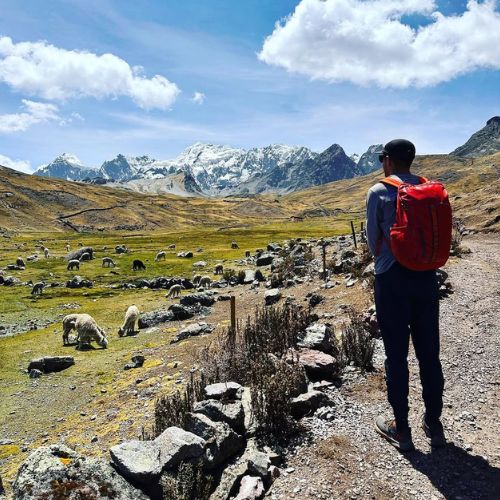Rainbow Mountain (Vinicunca) is one of the most visited natural destinations by tourists. This mountain has gained worldwide recognition for its natural colored stripes, forming a unique landscape.
These colors are due to the mineralogical composition of the soil: the red comes from iron oxide, the green from chlorite, the yellow from sulfur, and other tones like purple, pink, and white are due to magnesium compounds and calcium carbonate. For centuries, this mountain remained hidden under a layer of snow and, recently, due to climate change, it has been uncovered.
The adventure to Vinicunca begins in the city of Cusco, from where transport is taken to the towns of Cusipata or Pitumarca, depending on the chosen route.
The weather at Rainbow Mountain can be changeable, with low temperatures, especially in the mornings. It is recommended to visit between the months of April and October, during the dry season, to avoid rain and enjoy clear skies that allow you to appreciate the mountain's colors.
It is essential to acclimatize in Cusco for at least 1 or 2 days before the hike, which is around 3 to 5 km, as the altitude can cause altitude sickness, also known as "soroche."
In summary, the hike to Rainbow Mountain is not extremely long, but the altitude and weather make it an activity of moderate to high physical demand, so it is important to be well prepared and acclimatized before doing it.
Table of Contents
The adventure to Vinicunca begins in the city of Cusco, from where transport is taken to the towns of Cusipata or Pitumarca, depending on the route you choose. From Cusipata, the path is more accessible: a vehicle ride of approximately 3 hours and a hike of between 1.5 to 2 hours to reach the top. From Pitumarca, the hike is longer and more demanding, but also less crowded.
Along the way, visitors enjoy landscapes with views of snow-capped mountains like Ausangate, herds of llamas and alpacas, and local communities that keep their ancestral traditions alive.

The weather at Rainbow Mountain can be extreme, with very low temperatures, especially in the mornings. It is recommended to visit between the months of April and October, during the dry season, to avoid rain and enjoy clear skies that allow full appreciation of the mountain’s colors.
If you choose to go during the rainy season (November to March), don't forget to bring trekking shoes, as the path can become muddy and slippery. It is also recommended to carry a walking stick for added safety.
Altitude sickness, also known as soroche (in Peru and Bolivia), is a condition that affects many people when they rapidly ascend to high altitudes, generally above 2,500 meters above sea level, as in places like Cusco or Rainbow Mountain (which is over 5,000 m.a.s.l.).
At high altitudes, the air contains less oxygen, and the body needs time to adapt. If the adaptation is too quick or insufficient, symptoms may appear.
